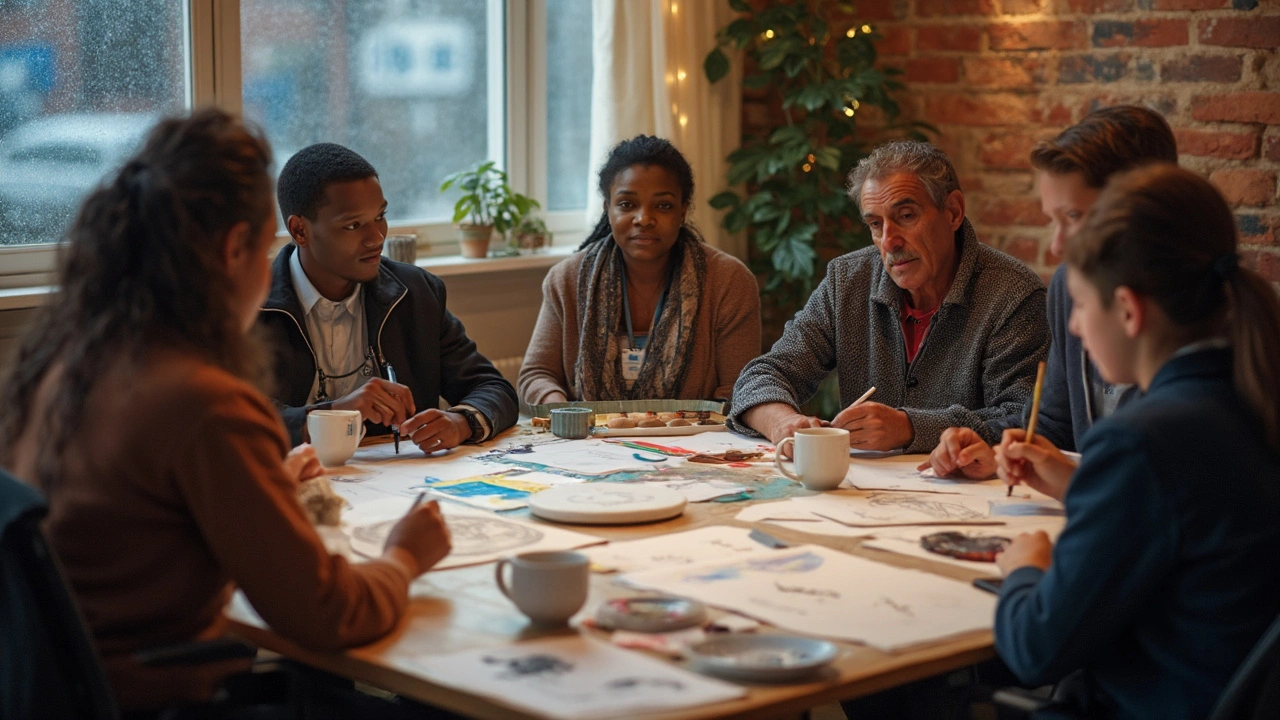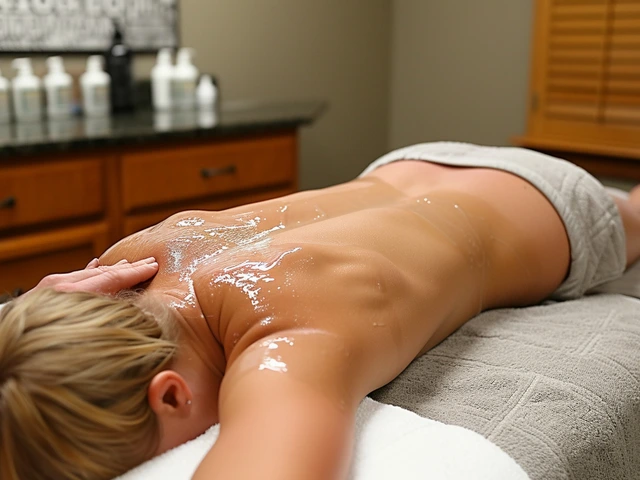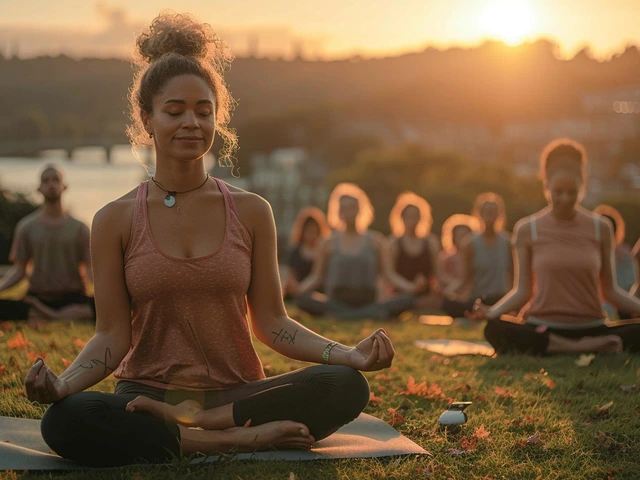When stress piles up, words can jam. Your body remembers what your mouth can’t say. That’s where the arts step in-not as hobbies, but as clinical tools that help you feel safer inside your own skin. If you’re looking for steadier moods, a wider window for stress, and practical ways to recover faster after hard days, you’re in the right place. Expect a clear overview, how-to steps you can act on today, and simple ways to choose the right approach for you.
- TL;DR: Arts therapies use making-drawing, music, movement, drama, writing-to regulate your body and emotions when talk alone isn’t enough.
- What you’ll get: a plain-English guide, evidence snapshots, step-by-step plans, a decision aid, and checklists to vet providers and start at home.
- Who it helps: people dealing with anxiety, burnout, grief, trauma, chronic illness, or anyone wanting better stress recovery.
- What changes: calmer baseline, fewer spirals, faster bounce-back, clearer boundaries, and a safer relationship with your own feelings.
- How fast: many people notice shifts within 3-6 sessions; deeper work often takes 8-12+ sessions. Keep simple daily practices between sessions.
What It Is, Why It Works, and the Evidence Behind It
Think of creative arts therapies as structured, research-backed ways to use art, music, movement, drama, and writing to change what’s happening in your brain and body. You don’t need to be “artistic.” Your marks, hums, steps, or lines are the method-not the performance.
Modalities you’ll see:
- Art Therapy: drawing, painting, collage, clay
- Music Therapy: listening, playing, singing, songwriting, rhythm
- Dance/Movement Therapy: guided movement and stillness to process emotion
- Drama Therapy and Psychodrama: role-play, story, metaphor, safe rehearsal
- Poetry/Bibliotherapy: reading and writing as emotional scaffolds
How they build resilience, in simple terms:
- Bottom-up regulation: Rhythm, breath, and sensory play dial down threat responses. Steady beat = steadier heart rate and breath.
- Top-down integration: Story, symbols, and choices help your thinking brain make sense of tough stuff without being flooded.
- Meaning-making: When you shape an image or a song, your nervous system learns, “I can shape my state.” That’s agency-core to resilience.
- Practice under safe stress: You try new responses in a low-stakes space-then your body remembers that flexibility later, when life hits hard.
What does the research say?
- World Health Organization’s scoping review (2019) found robust evidence that arts participation supports mental health across the lifespan, including anxiety, depression, and trauma recovery.
- Cochrane reviews report that music therapy reduces depressive symptoms and improves functioning when added to standard care.
- NICE guideline (UK) recommends arts therapies as part of treatment for psychosis to support negative symptoms and engagement.
- Meta-analyses in peer-reviewed journals show that art and movement-based therapies reduce trauma symptoms, improve emotion regulation, and increase quality of life in both adults and youth.
What “resilience” looks like in real life:
- Recovery: Your stress response settles faster after triggers.
- Range: You can feel more emotions without going numb or overwhelmed.
- Relating: You set boundaries with less guilt and more clarity.
- Resource: You have 2-3 body-based tools you actually use, not just know.
| Modality | Best when you... | Typical session | Group/Individual | Home practice | Evidence snapshot |
|---|---|---|---|---|---|
| Art Therapy | Struggle to name feelings, carry trauma/grief, feel stuck or numb | 50-60 min; image-making + reflection | Both | Sketching, collage, visual journaling 10-20 min/day | Improves emotion regulation, PTSD symptoms, and mood |
| Music Therapy | Battle anxiety, depression, pain, sleep issues; respond to rhythm | 45-60 min; listening, playing, singing, guided rhythm | Both | Breath-to-beat pacing, curated playlists, humming | Reduces depression and anxiety; supports pain and sleep |
| Dance/Movement | Feel “stuck in the body,” dissociate, or live in fight/flight | 50-60 min; movement phrases, grounding, pacing | Both | 5-minute daily reset: shake, sway, stillness cycle | Improves body awareness, trauma recovery, mood |
| Drama/Psychodrama | Need rehearsal for hard conversations; carry shame; social anxiety | 60-90 min; role-play, doubling, safe scene work | Both | Role scripts, voice work, mirror practice | Boosts self-efficacy and social functioning |
| Poetry/Biblio | Process grief, identity shifts, complex emotions through words | 50-60 min; reading, writing, guided reflection | Both | 10-minute write-and-underline ritual | Supports meaning-making and reduced rumination |
A quick personal note: when my mind is noisy, my partner Elliot and I hum a single tone while pacing our breath-4 counts in, 6 out. It’s tiny, but it nudges my body from “I need to fight this” to “I can ride this.” That’s the point: repeatable habits that your body trusts.
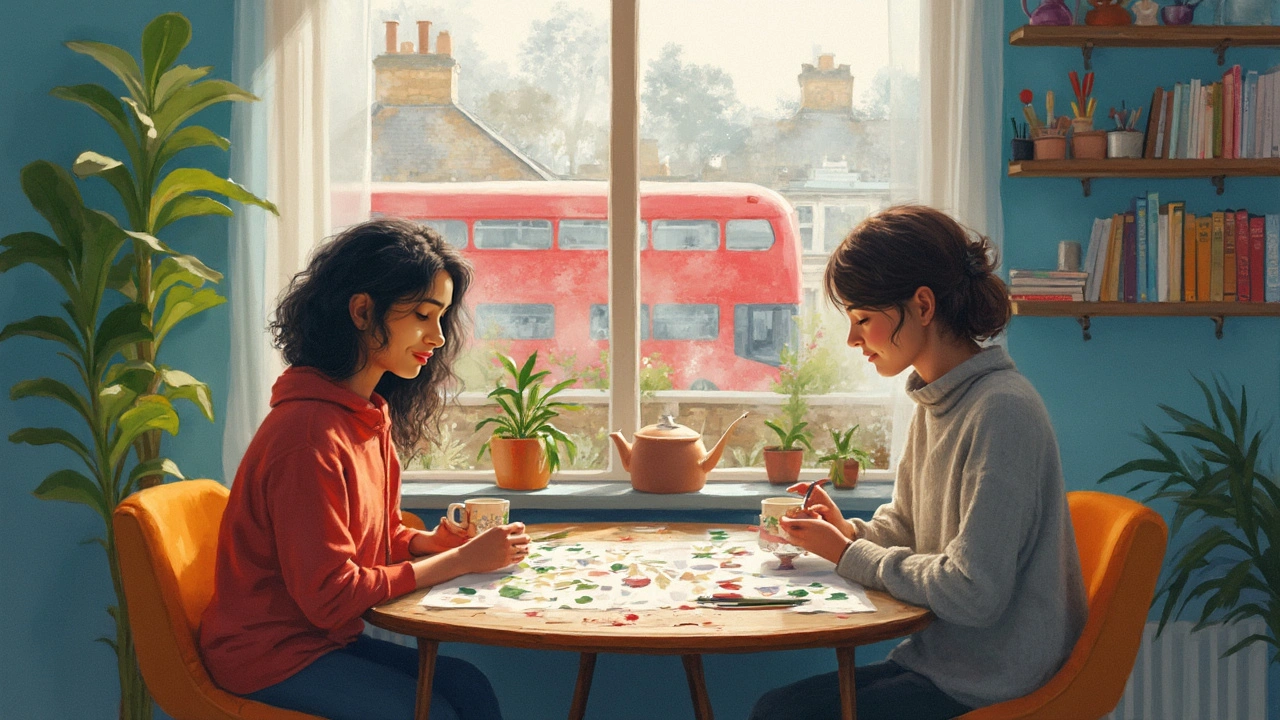
How to Start: Step-by-Step Plans, Tools, and Real-World Examples
Here’s a simple path you can follow this week. No talent needed. Just curiosity and a bit of structure.
- Name your top stress pattern in one line. Example: “I spiral at night,” “I shut down when criticized,” or “I snap mid-afternoon.”
- Pick a modality that fits that pattern. Use this thumb rule:
- If your thoughts race, start with rhythm (music, breath-to-beat).
- If you feel numb, start with color and texture (art).
- If you feel trapped in your body, start with gentle movement.
- If you rehearse arguments in your head, try drama/role practice.
- If you carry layered grief, try poetry/bibliotherapy.
- Book a consult. Ask about credentials (see checklist below), approach, goals, and how they measure progress.
- Start with 6 sessions. Mark a simple baseline: sleep, irritability, panic spikes, or energy on a 0-10 scale.
- Do 10 minutes of home practice on non-session days. Keep it doable, not perfect.
- Review at week 3 and week 6. Adjust intensity, try a second modality if needed, or switch therapists if the fit is off.
Not sure where to begin? Try this basic decision guide:
- Do you want less anxiety by bedtime tonight? Start with music: 60 BPM playlist and paced breathing.
- Do you need to process a hard memory without re-living it? Start with art therapy and keep images simple and symbolic.
- Do you crave a bigger sense of presence? Start with movement: sway, step, and pause with soft eyes.
- Do you avoid tough talks? Start with drama therapy to rehearse your lines and body cues.
Core exercises you can use right now:
- Music reset (5 minutes):
- Pick a track between 55-65 BPM. Sit, one hand on chest, one on belly.
- Inhale for 4 counts, exhale for 6. Hum on the exhale to vibrate your chest.
- After 2 minutes, tap a slow, steady beat with your fingers for 90 seconds.
- End with silence for 30 seconds. Notice one sensation that feels okay.
- Color steps (7 minutes):
- Fold paper into four panels.
- Panel 1: scribble your current mood using 2-3 colors.
- Panel 2: add three shapes that would help, like a boundary line or a soft circle.
- Panel 3: blend two colors until edges soften. Breathe while blending.
- Panel 4: write one sentence the image suggests, not a summary, just a line.
- Move-and-settle (4 minutes):
- Shake hands for 20 seconds, then feet for 20 seconds.
- Sway side to side for one minute as if holding a sleepy child.
- Pause. Scan your body from feet to jaw. Soften the tightest spot by 5%.
- End by pressing your palms together for 10 seconds. Release slowly.
- Script rehearsal (6 minutes):
- Write a two-line script you need: “I can’t take that on. Let’s revisit next week.”
- Stand. Say it three times: neutral, firm, warm.
- Notice your shoulders and breath. Adjust posture until your body believes the words.
- Poem pause (5 minutes):
- Write a quick list: “Today I wanted… Today I needed… Today I chose…”
- Underline one word. Write three lines starting with that word.
- Read it out loud in a whisper. Mark one line that felt true.
How many sessions do people usually need?
- Short-term goal (sleep, daily calm): 4-8 sessions
- Skills-building (boundaries, self-soothing): 8-12 sessions
- Trauma integration or grief: 12-24+ sessions, with careful pacing
Cost and access tips:
- Ask about sliding scale or group formats (often half the price of individual).
- Check if your insurance covers licensed creative arts therapists under mental health benefits.
- Universities with training clinics often offer reduced-fee sessions.
- Online options can widen reach, but trauma work may be safer in person. Discuss a plan.
Examples from real life (de-identified composites):
- Burned-out nurse: Used 10-minute rhythm-and-breath daily and a weekly music therapy session. Within 5 weeks, she reported one fewer panic spike per shift and steadier sleep.
- Teen after sports injury: Movement therapy reframed her body from “broken” to “adapting.” After 8 sessions, she returned to light training without dread.
- Widower: Art therapy helped him “hold the love without the ache running the day.” Over 12 sessions, holidays stopped feeling like landmines.
Rules of thumb that keep progress steady:
- Small beats grand. Five minutes most days beats one long session once a month.
- One dial at a time. Adjust intensity or duration, not both.
- Stop at 7/10. If emotion rises past a 7, switch to grounding (temperature, breath, steady beat).
- End with a resource. After any deep work, add one regulating action: sip cool water, step outside, slow exhale.
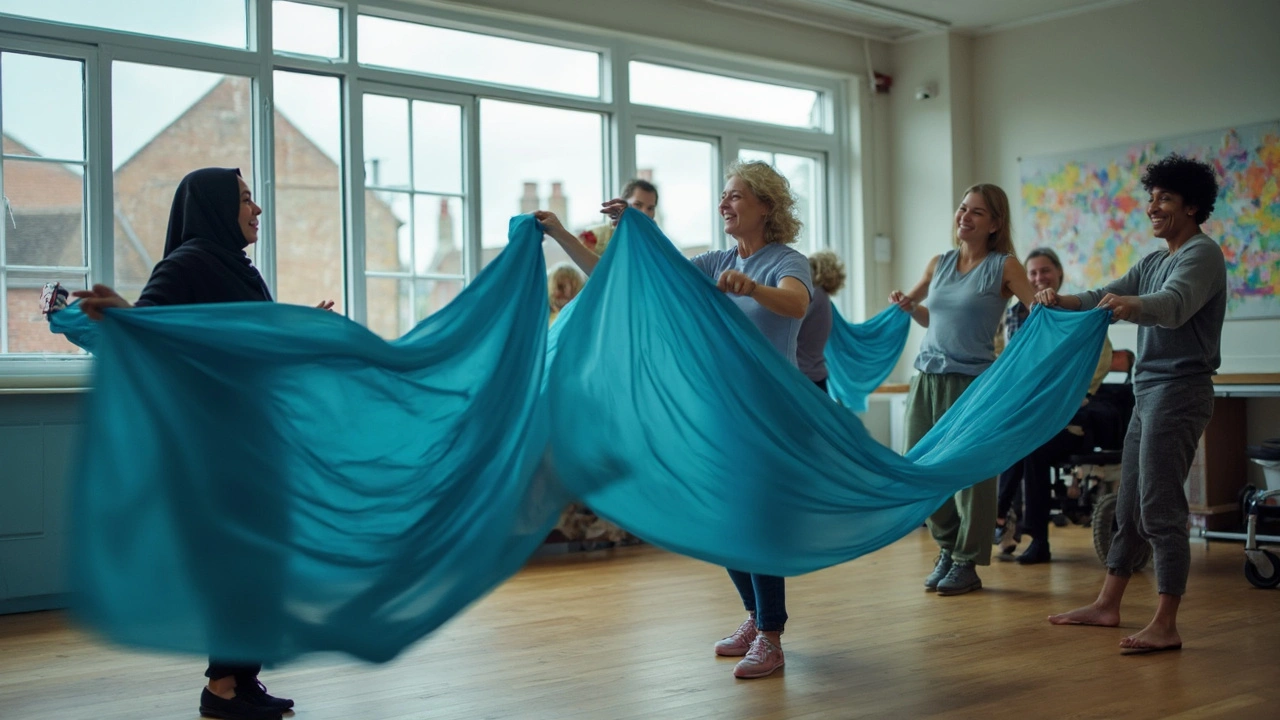
FAQ, Checklists, and Next Steps
Quick FAQ
- Do I need talent? No. This is about nervous system change, not performance.
- Is this evidence-based? Yes. WHO’s review, Cochrane analyses, and NICE guidelines support arts therapies for mental health outcomes.
- How fast will I feel a difference? Many people feel shifts in session one (body settling), with clearer changes by sessions 3-6.
- Can it replace meds? Sometimes it reduces symptoms enough to adjust meds, but don’t change medication without your prescriber.
- Is it safe for trauma? Yes, when paced well. You should never be pushed to disclose details. Safety first, story later.
- Online or in person? Both can work. For complex trauma, in-person is often better. Hybrid is a good compromise.
- Group or individual? Group adds connection and lowers cost; individual tailors pacing. Many people do both.
Checklist: How to vet a therapist
- Credentials match the modality: ATR-BC (art therapy), MT-BC (music therapy), BC-DMT or R-DMT (dance/movement), RDT (drama therapy).
- Training in trauma-informed care; asks about safety, pacing, and consent.
- Clear plan for goals and how you’ll track them (sleep logs, triggers, mood scales).
- Offers grounding before/after intense work; doesn’t rush disclosure.
- Good fit: You feel respected, not managed. You can say no in the room.
First-session cheat sheet
- Share your stress pattern and one daily situation you want to improve.
- Ask: “What will a typical session look like?” “How will we know it’s working?”
- Set a stop signal (hand raise, object on table) to pause if you feel flooded.
- Confirm boundaries: what is and isn’t on the table in early sessions.
- Book your next three visits to build momentum.
Home kit (low-cost)
- Art: mixed paper, colored pencils or markers, glue stick, magazines for collage, soft clay or putty.
- Music: one slow playlist (55-65 BPM), one lift playlist (75-95 BPM), a simple shaker (or dry rice in a jar).
- Movement: yoga mat or towel, soft ball, timer.
- Words: small notebook, pen you like, 5-6 short poems or passages that steady you.
Pitfalls to avoid
- Going too deep too fast. If you leave sessions wiped out or shaky for hours, slow down. Your nervous system learns safety by feeling safe.
- Chasing catharsis. Big releases feel dramatic, but consistent regulation is what builds resilience.
- Skipping closure. Always end with a grounding ritual: breath, sip, step outside, or a steady beat.
- Self-judgment. Your art or movement is data, not a grade.
Next steps by scenario
- High-functioning but frayed at night: Do music reset before bed for 7 nights; add one session/week for a month.
- Recent loss: Start with art therapy using simple shapes and colors; aim for 8 sessions and weekly at-home collage.
- Workplace anxiety: Pair drama therapy for scripts with a daily 4-minute move-and-settle practice.
- Teens: Keep sessions playful and short; use group formats for cost and peer support.
- Chronic pain: Use slow breath-to-beat and gentle movement; coordinate with medical care for pacing.
Troubleshooting
- “I feel worse after sessions.” Ask your therapist to shorten intensity windows and extend grounding. Track your 24-hour aftercare.
- “I’m not consistent at home.” Cut your practice time in half and tie it to an anchor habit (after coffee, before brushing teeth).
- “My therapist pushes disclosure.” Name it: “I need to slow down.” If it doesn’t shift, find a better fit.
- “I shut down on video.” Try phone sessions with movement cues or switch to in person if possible.
Safety note: If you’re in acute distress or thinking of harming yourself, contact local emergency services or a crisis hotline in your area. Arts practices support healing, but crisis care comes first.
The bottom line you can act on today: pick one tiny practice-hum on the exhale, color a square, sway for a minute-and repeat it until your body knows it by heart. Then add the next. That’s how resilience grows: one steady beat at a time.
